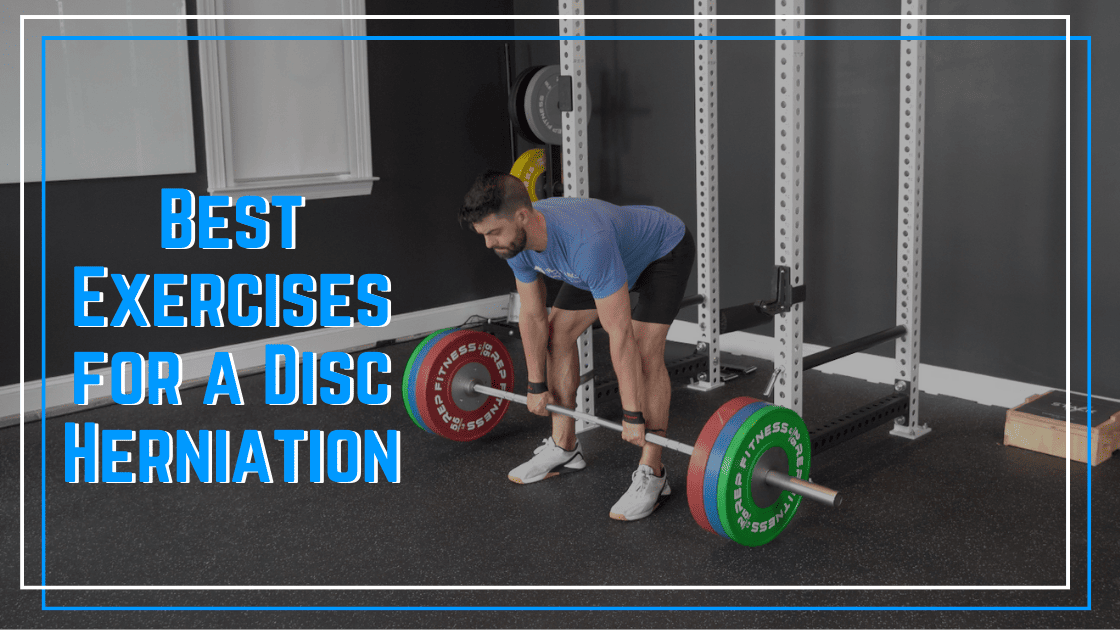I get this question a LOT! Having back pain and getting an MRI that finds a disc herniation can be a frightening experience. And not a day goes by that I don’t answer the question of, “is it safe for me to do X exercise with a disc herniation?” Or, “what are the best exercises with a disc herniation?”
The best exercises for your back pain is a complex discussion, as is pain in general. An MRI is a snapshot of your body at one moment in time. And while disc herniations can be severe, more often, medical professionals incidentally create more fear than is necessary with this diagnosis. I hope to give you better guidance and hope for your recovery in this article.
Best Exercises with a Disc Herniation
Let’s start by having a big-picture discussion of disc herniations. We previously believed that any findings of a disc herniation on an MRI were a significantly concerning diagnosis.
Recent research has significantly challenged this idea, and I’d like to review a few studies that should give you a lot of hope if you have the diagnosis of a disc herniation.
Disc Bulges in Asymptomatic Populations
First, several studies have looked at spine MRIs of people with no back pain or symptoms. In these studies, they’ve imaged thousands of people with shocking findings.
To quote a meta-analysis:
“The prevalence of disc bulges in asymptomatic populations ranges from 20% in young adults to >75% in patients older than 70 years of age.”
This research should bring up a question in your mind. If 20% of people without symptoms have a disc bulge, is my pain from this or something else? Maybe it is. Maybe not.
Variability in MRI Findings
Another study had similarly shocking results. One patient with low back pain received 10 MRIs in three weeks. Each MRI was performed at a different center and read by another radiologist.
“Across all 10 study examinations, there were 49 distinct findings reported related to the presence of a distinct pathology at a specific motion segment. Zero interpretive findings were reported in all 10 study examinations and only one finding was reported in nine out of 10 study examinations.
This study found marked variability in the reported interpretive findings and a high prevalence of interpretive errors in radiologists’ reports of an MRI examination of the lumbar spine performed on the same patient at ten different MRI centers over a short time. As a result, the authors conclude that where a patient obtains their MRI examination and which radiologist interprets the examination may directly impact radiological diagnosis, subsequent choice of treatment, and clinical outcome.”
Put simply, there was a crazy amount of differences in findings across these MRIs. This would lead to a wide range in diagnoses and treatments.
Or, put another way, if you don’t like your MRI, get another one because you’ll likely find something different.
Spontaneous Regression
Finally, this study suggests that 2/3rds of disc herniations spontaneously resorb. This means that if a disc herniation is the actual cause of your symptoms, the human body is often capable of healing itself!
So What are the Best Exercises for Back Pain?
So, the above research may make you question if your disc herniation diagnosis is relevant or not. I think that is worth considering.
And since MRIs are just ONE static image of your body that has the ability to adapt and heal, I do NOT believe there are good or bad exercises for people with disc herniations to perform.
Instead, we need to focus on the positions, loads, and activities that aggravate your symptoms and those that improve your symptoms.
Here’s what you should do:
In detail, write out the movements and activities that aggravate your back pain. For example, when I back squat over 185lbs, my back pain goes from 0/10 to 5/10, and then it takes an hour to calm back down. But when I front squat, I can lift without pain.
Write down your response (good and bad) to several different movements and start to look for a pattern. In the above example, you might recognize that back squats have a more forward torso lean than front squats. If you notice other movements follow the same pattern, you might be able to identify that your back doesn’t like being very inclined under load right now.
By identifying these patterns, you can figure out other exercises that you can do without aggravating your back and those that you need to unload. With this in mind, you can game plan a more effective return to activities progression.
In our squat example, you’ll bias your leg training to movements with an upright torso, like front squats, goblet squats, sumo deadlifts, and lunges.
Related article: Back Vs Front Squats – Understanding the Key Differences
As your symptoms calm down, you can add more hinged movements. This might start with lightly loaded back squats and then progress to more hinged exercises like RDLs and conventional deadlifts.
Conclusion
There is no “best exercise with a disc herniation.” But there are more and less tolerated exercises for YOU.
By methodically tracking your symptoms, you can better game plan how to stay active and accurately assess if the treatments you are doing are helping you progress or if you should explore other treatments.
Need help from fitness-forward back pain specialists? The Onward Physical Therapy team is nationwide and specializes in helping active individuals stay in the gym while getting out of pain.






